“Green fruit with yellow inside” is a common query among fruit lovers who stumble upon unfamiliar fruits and want help identifying them. If you’ve come across such a fruit and want to identify it, you’re in the right place. Below, you’ll find some of the most common green fruits with yellow flesh, along with photos and details to help you match and identify your mystery find.
1. Lucuma
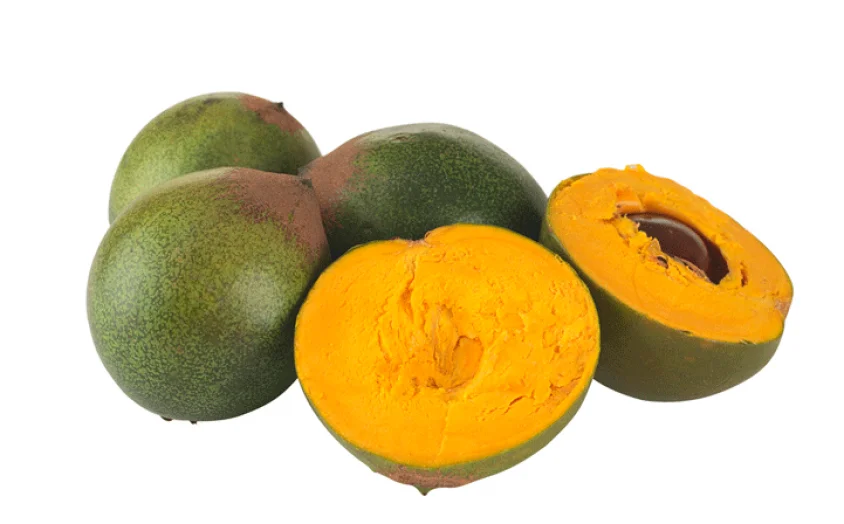
Beneath its dull green skin lies lucuma has golden-yellow flesh that’s dry and sweet with notes of butterscotch and sweet potato. Native to the cool highlands of Peru and parts of Chile, it has long been valued as both food and traditional medicine. Rich in vitamins and minerals, lucuma is often turned into powder for smoothies, puddings, and desserts.
2. Mamoncillo

When ripe, mamoncillo’s thin green skin hides juicy yellow pulp clinging to a large seed. Its flavor is sweet-tart, reminiscent of limeade, making it perfect for refreshing drinks across the Caribbean and Latin America. Whether eaten fresh, soaked in spiced rum, or simmered with ginger and sugar, this tropical treat is beloved for its tangy burst of flavor.
3. Yellow Watermelon
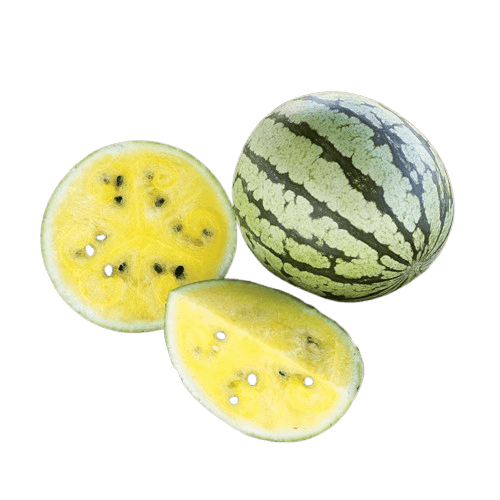
From the outside, yellow watermelon looks just like the familiar green-striped summer fruit. Slice it open, though, and you’ll find bright golden flesh with a honey-like sweetness. First grown in Africa thousands of years ago, it predates the red varieties we know today. Its juicy texture and sunny color make it perfect for fruit salads, smoothies, or simply enjoying chilled.
4. Canistel (Eggfruit)

Some canistel varieties stay green on the outside but ripen to reveal dense yellow-orange flesh inside. Sweet and rich, its texture is often compared to a boiled egg yolk—earning it the nickname “eggfruit.” Native to Mexico and Central America, it’s now enjoyed worldwide in custards, milkshakes, and baked goods, adding a naturally creamy, tropical twist to desserts.
5. Mango
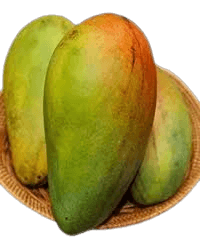
Some mango varieties, like Keitt and Kent, stay green-skinned even when ripe, concealing vibrant yellow flesh inside. Sweet, juicy, and full of tropical aroma, mango is loved fresh, blended into smoothies, or used in chutneys and desserts. Rich in vitamin C and antioxidants, it’s both healthy and delicious, and loved all around the world.
6. Starfruit (Carambola)

Glossy green when young, starfruit develops golden-yellow flesh as it ripens, forming its distinctive star shape when sliced. Crisp and juicy, with a sweet-tart taste, it can be eaten fresh, juiced, or added to salads. Native to Southeast Asia, carambola is both decorative and delicious, making it a favorite for fruit platters and garnishes.
7. Papaya

Some papayas keep their smooth green skin even when ripe, hiding sweet yellow to golden-orange flesh inside. Soft, fragrant, and packed with antioxidants, papayas are enjoyed fresh, in salads, or blended into smoothies. This tropical fruit is valued not only for its flavor but also for its benefits to digestion, skin health, and overall wellness.
8. Breadfruit
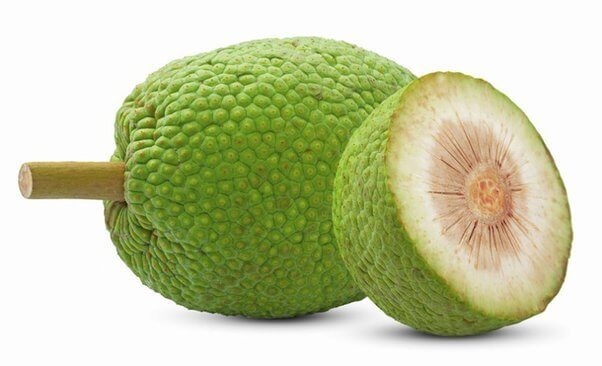
Breadfruit’s large, green, pebbly skin conceals creamy yellow flesh when ripe. Starchy and versatile, it can be roasted, baked, or boiled, taking on a potato-like texture with a subtle sweetness. Grown in tropical regions worldwide, it has long been a staple food, prized for its ability to feed communities and adapt to a wide variety of recipes.
9. Durian
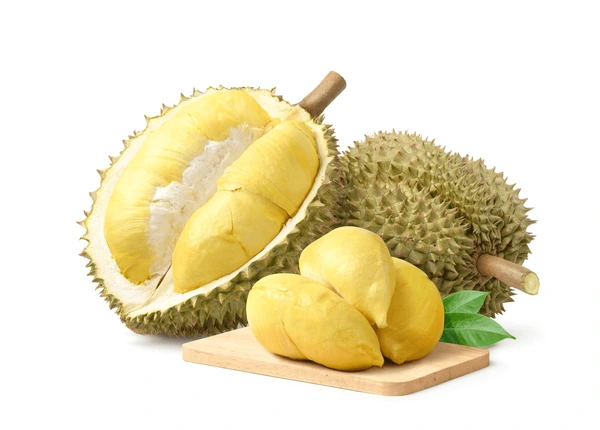
With its spiky green husk, durian hides rich, custard-like yellow pulp inside. Known as the “King of Fruits” in Southeast Asia, it has a bold aroma and complex flavor that’s both sweet and savory. Packed with nutrients, healthy fats, and fiber, durian is a true delicacy—one that inspires passionate love or strong aversion.
10. Jackfruit
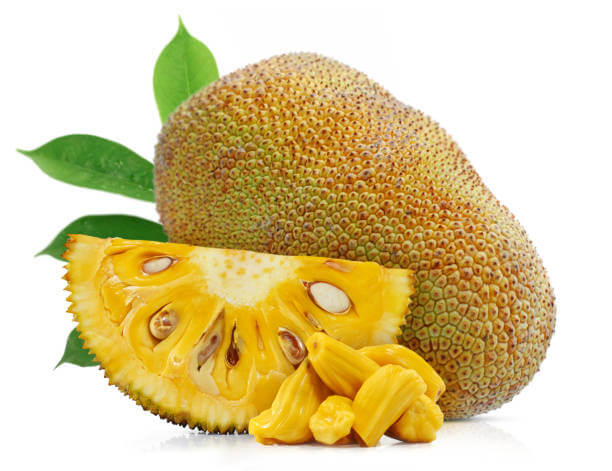
This giant tropical fruit has a bumpy green rind hiding clusters of bright yellow, sweet-scented bulbs inside. Native to South and Southeast Asia, jackfruit is eaten raw, dried, or cooked, and even used as a meat substitute in savory dishes. Each bulb is juicy and fragrant, offering a flavor somewhere between banana, mango, and pineapple.
11. Cempedak
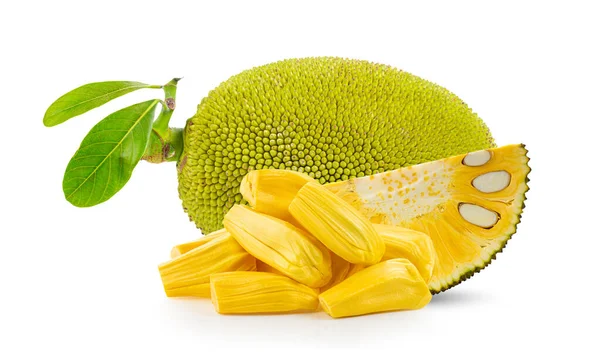
At first glance, cempedak could pass for a smaller jackfruit, with its green skin and golden-yellow pods inside. Native to Southeast Asia, it has a sweeter, richer taste and a strong, enticing aroma. Eaten fresh, fried in batter, or turned into desserts, cempedak is beloved for its soft, honey-like flesh and tropical fragrance.
12. Pawpaw
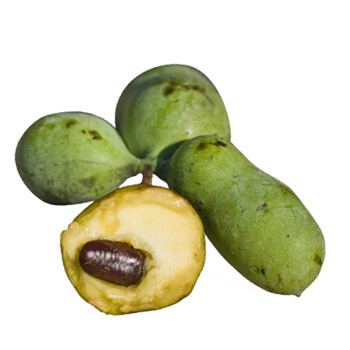
Pawpaw’s greenish skin conceals creamy yellow flesh with a flavor that’s a surprising blend of mango, banana, and citrus. Native to North America, it grows in temperate forests rather than the tropics. The fruit’s custard-like texture and sweet, tropical taste make it a rare seasonal treat, often enjoyed fresh or in pies, smoothies, and ice cream.
13. Ugli Fruit

With its bumpy green-yellow skin, ugli fruit looks a little unconventional, but inside you’ll find juicy yellow-orange segments bursting with citrus flavor. A natural hybrid of tangerine and grapefruit , it has a mild sweetness balanced by a refreshing tang. It’s easy to peel and perfect for snacking, juicing, or adding to salads.
14. Calamansi

Small and round with green skin that ripens to orange, calamansi hides bright yellow flesh inside. Native to the Philippines and Southeast Asia, it’s valued for its bold, tangy flavor—somewhere between lime and mandarin. Calamansi is used to flavor drinks, marinades, and desserts, adding a zesty kick to both sweet and savory dishes.
15. Green Plumcot
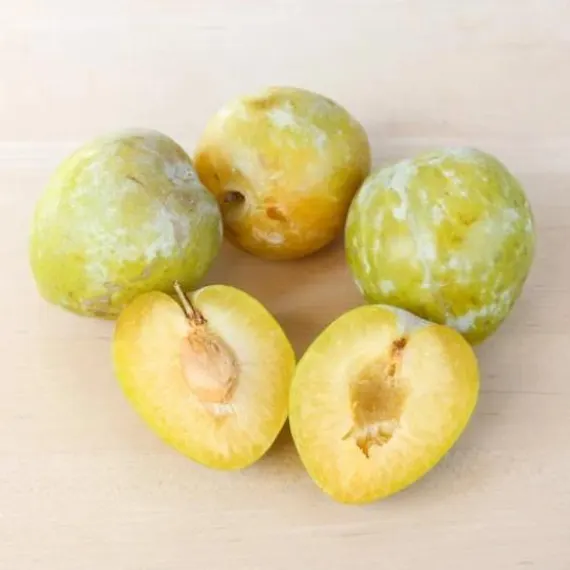
Green plumcots, also called green pluots, have smooth green skin with dense yellow flesh inside. This plum–apricot hybrid combines the best of both parents, offering a juicy, sweet flavor with subtle hints of melon and pineapple. They’re delicious eaten fresh, sliced into salads, or turned into jams.
16. Maracuya

Maracuya, or golden passion fruit, has a smooth green-to-yellow rind and bright yellow, aromatic pulp filled with edible seeds. More tart and tangy than its purple cousin, it’s often used in juices, desserts, and cocktails. Its tropical fragrance and bold flavor make it a favorite in both sweet and savory recipes.
17. Feijoa (Pineapple Guava)
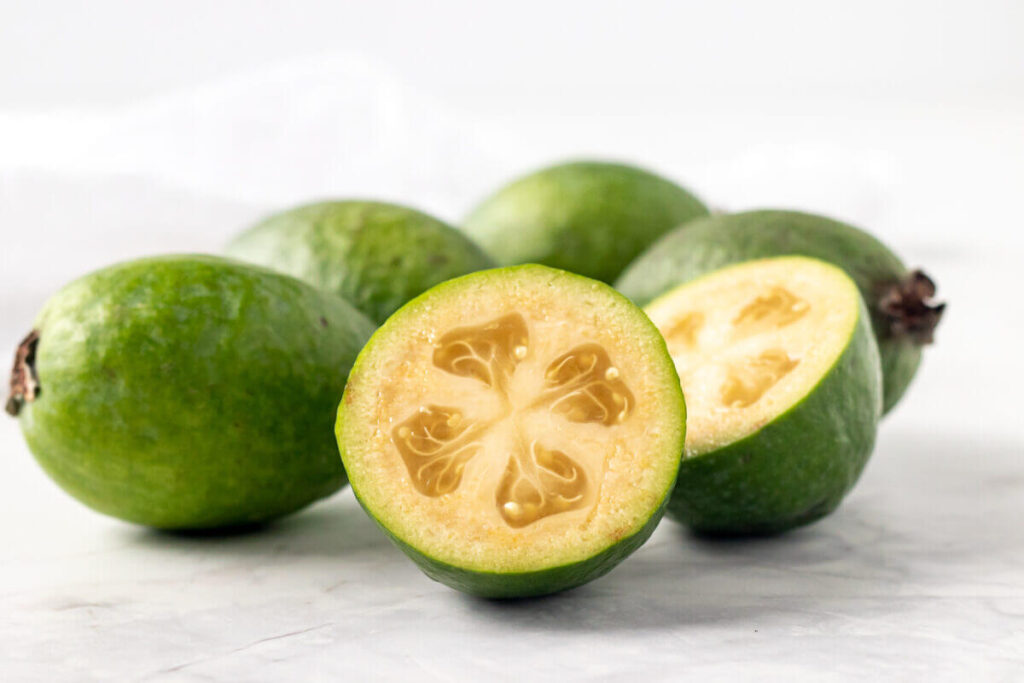
Feijoa has a slightly bumpy green skin and soft, yellowish pulp with a sweet, perfumed flavor reminiscent of pineapple, guava, and mint. It’s eaten fresh, scooped with a spoon, or used in jams, smoothies, and baked goods. Its fragrant aroma makes it as delightful as it is tasty.
